In today’s society, you’ll find many products and treatments on the market that claim to help you slow down aging. But we’ll let you in on a little secret: Exercise reigns supreme above all else. Growing older is simply a natural part of life, but this “magical wonder product,” as RJ Williams, PT, DPT, and franchise regional consultant for FYZICAL Therapy & Balance Centers dubs it, can help you get a handle on how you age. Because physical activity is beneficial to your body and health in more ways than one, we rounded up the absolute best exercises to do if you’re over 60.
“I have spent my career in the healthcare space, specifically focused on the health and rehabilitation of older adults, emphasizing fall prevention and healthy aging,” Williams tells us. Along with our own recommendations, Williams offers a few of his top moves that will add quality years to your life. “Our goal is to maintain a level of function and independence so you can love your life for many years,” he adds.
In order to age well and lead a long, healthy life, in addition to walking and stretching—and doing any sort of activities that will keep you on your feet, from gardening to playing golf—you need to partake in at least two to three days per week of basic strength training that targets your entire body. We’re talking about exercise moves that will make your muscles stronger, while also promoting better balance, posture, core strength, stability, and mobility. In fact, we urge you to consider adding the following exercises to your strength training routine.
So without further delay, read on for the best exercises to do if you’re over 60. And next, be sure to check out 7 Strength Training Habits That Are Destroying Your Body by 40.
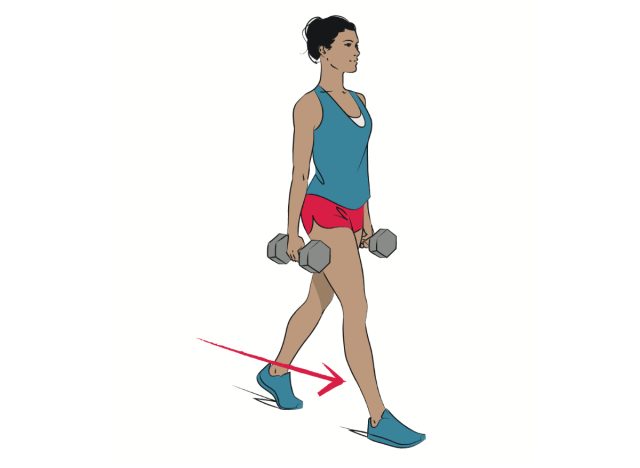

“A major part of remaining independent is the ability to bring your groceries into the house,” Williams says. “An easy exercise variation is the farmer’s carry. If you are comfortable using weights, a simple set of dumbbells or kettlebells will do the trick, but you can easily substitute them with household items like a water jug.”
In order to perform this exercise, simply hold onto your free weights or household item of choice, and carry them. Make it your goal to complete the farmer’s carry in one or two minutes. That may be all the way down your driveway or to the end of the block. Feel free to increase the weight if you’re not too tired doing so.
“I love this exercise because not only do you involve the grip, but you activate muscles in the back and lower body, too. In addition, the added load you’re not used to carrying increases your heart and breathing rates. All these factors contribute to improving your fitness and directly relate to everyday tasks,” Williams adds.
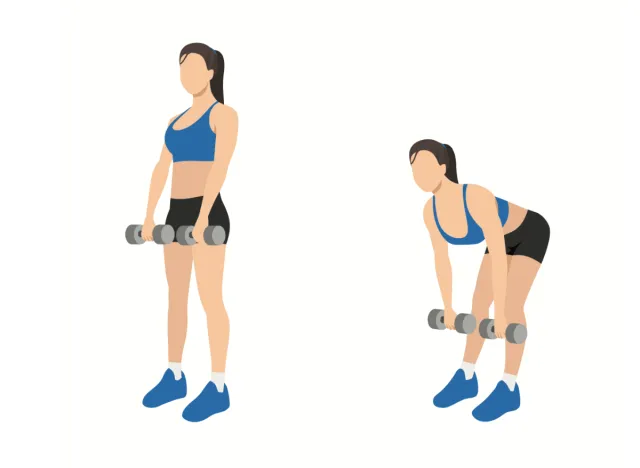

If you feel intimidated by the deadlift, you’re not alone—but don’t let that hold you back from trying it! After all, it’s one of the best exercises to do if you’re over 60.
“As you get older, is it important to you that you’re able to bend down and tie your shoes? How about the ability to stand up from a chair under your power? If your answer is yes, then exhale, and work through this,” Williams encourages. It’s always a smart idea to work with a certified fitness professional if you feel like you need some assistance starting out.
To perform a deadlift, feel free to begin by placing an eight- to 12-inch box behind you. The corner of it should be between both legs. Your goal is to pick up and lower a free weight from the box’s corner directly below you. Make things more advanced by placing your feet shoulder-width apart and holding free weights at your sides. Hings at the hips, and lower the weights down the outside of your legs, keeping them close to your body. Once you feel a solid stretch in the back of your legs, bring the weights back up.
Hinging your hips is a crucial movement in many day-to-day activities, and the deadlift helps you get better at it. In addition, this exercise helps you build stronger leg and lower back muscles.
“Our goal is more focused on strengthening with this exercise, so we want anywhere from three to eight repetitions in one set, and we can do four to five sets daily. Our primary focus at first is learning the movement and performing it well, then, these should feel difficult once you build the skill to train the exercise with good form,” Williams explains.
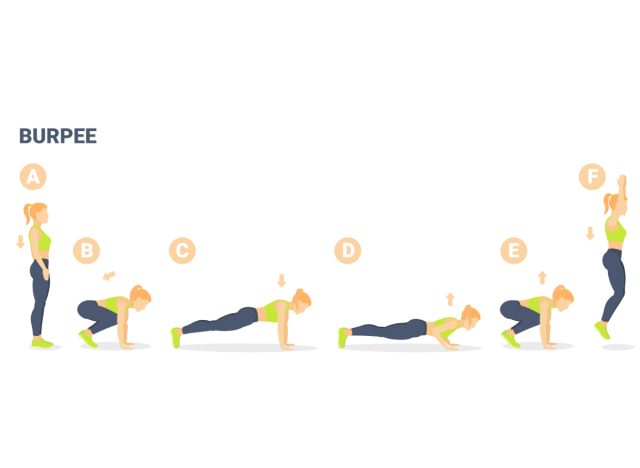

“Think of a burpee as a fall-recovery transfer; if you fell on the floor tomorrow, could you get yourself back onto your feet under your power? A burpee can help you safely transition from lying on the floor to returning to your feet,” Williams explains.
READ RELATED: Exertion Headaches: Identify The Common Symptoms
If necessary, you can use a stable chair or complete this exercise close to a couch to help get yourself up and down from the floor. Using support, lower your body until you’re on the floor. Then, come back to your feet. “This may look like slowly getting to one knee, then hand on the chair, maybe both, and then back onto your feet. Performing this movement alone can be a massive confidence boost for my patients,” Williams adds. “The belief and understanding that they have the capability is a game-changer. Practice this move and build total-body strength by incorporating your legs, arms, and core.”
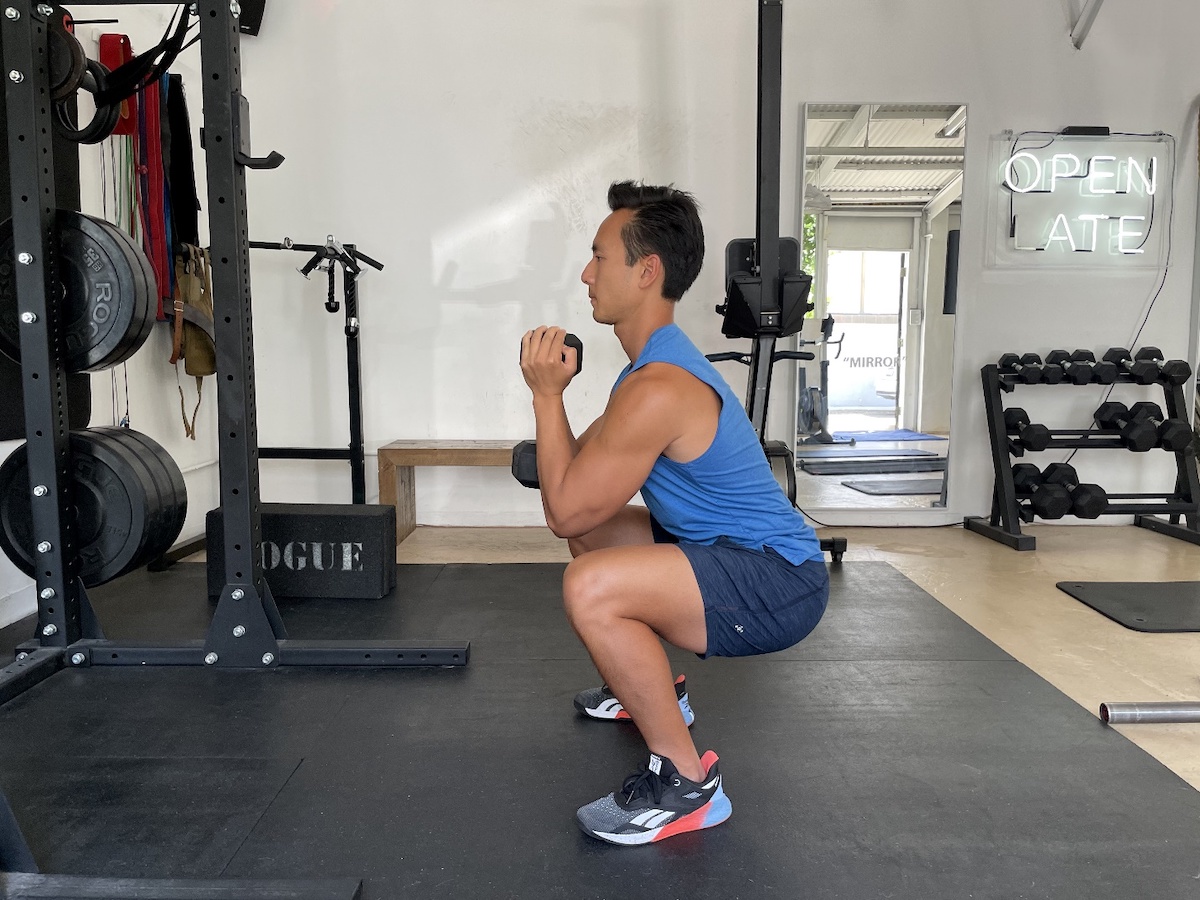

Start the dumbbell goblet squat by holding a dumbbell close to your chest. Keeping your chest up and your core tight, push your hips back and squat down until your hips are parallel to the ground. Drive through the heels and hips to stand back up, flexing your quads and glutes to finish. Complete three to four sets of 10 to 15 reps.
Consider it an added bonus that, in addition to being one of the single best exercises you can possibly do, scientists say that squatting is also one of the single best exercises you can possibly do for your brain—as it’s the best for beating back Alzheimer’s.
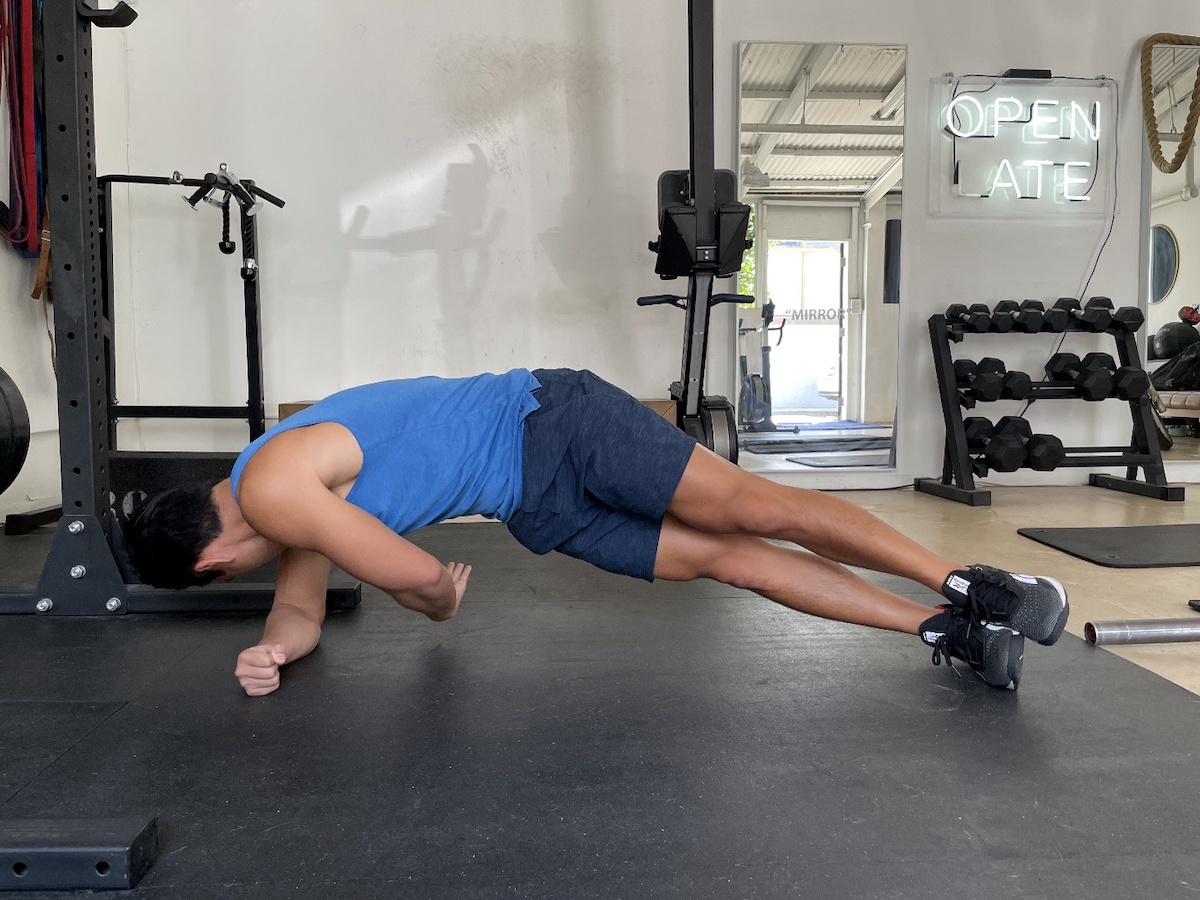

Stack your legs, and get into a side plank position. Begin by keeping your core tight and your glutes squeezed, reach across your body with the top hand, stretching your shoulder blade. Pull your elbow back to the starting position, squeezing your upper back when you finish. Complete three to four sets of 10 reps on each side.
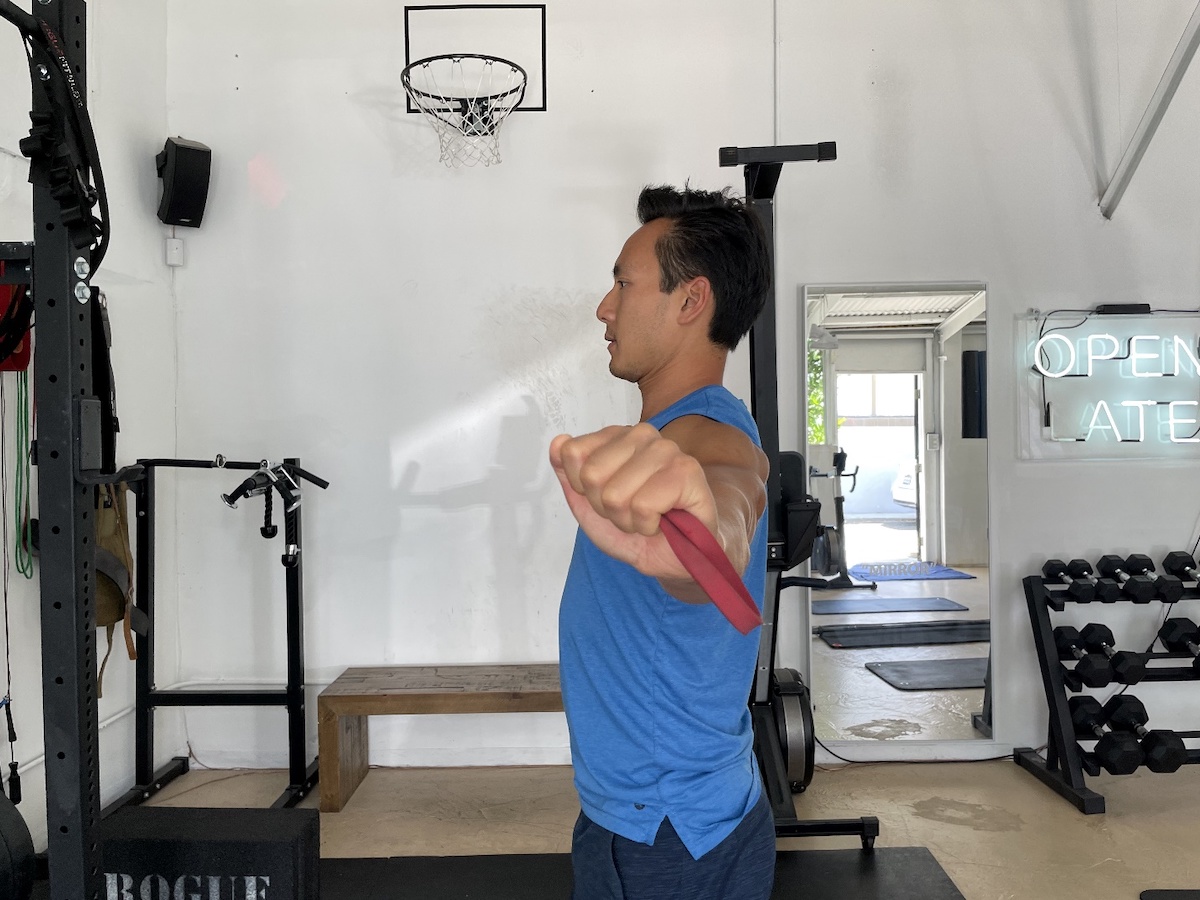

Grab a light or medium resistance band, and hold it with both hands just about shoulder-width apart. Keeping the hands completely straight, begin pulling the band apart until your hands are aligned with your torso. As you’re pulling the band back, begin squeezing your shoulder blades together. Hold the end of the movement for one to two seconds before returning to starting position. Complete three to four sets of 20 reps.
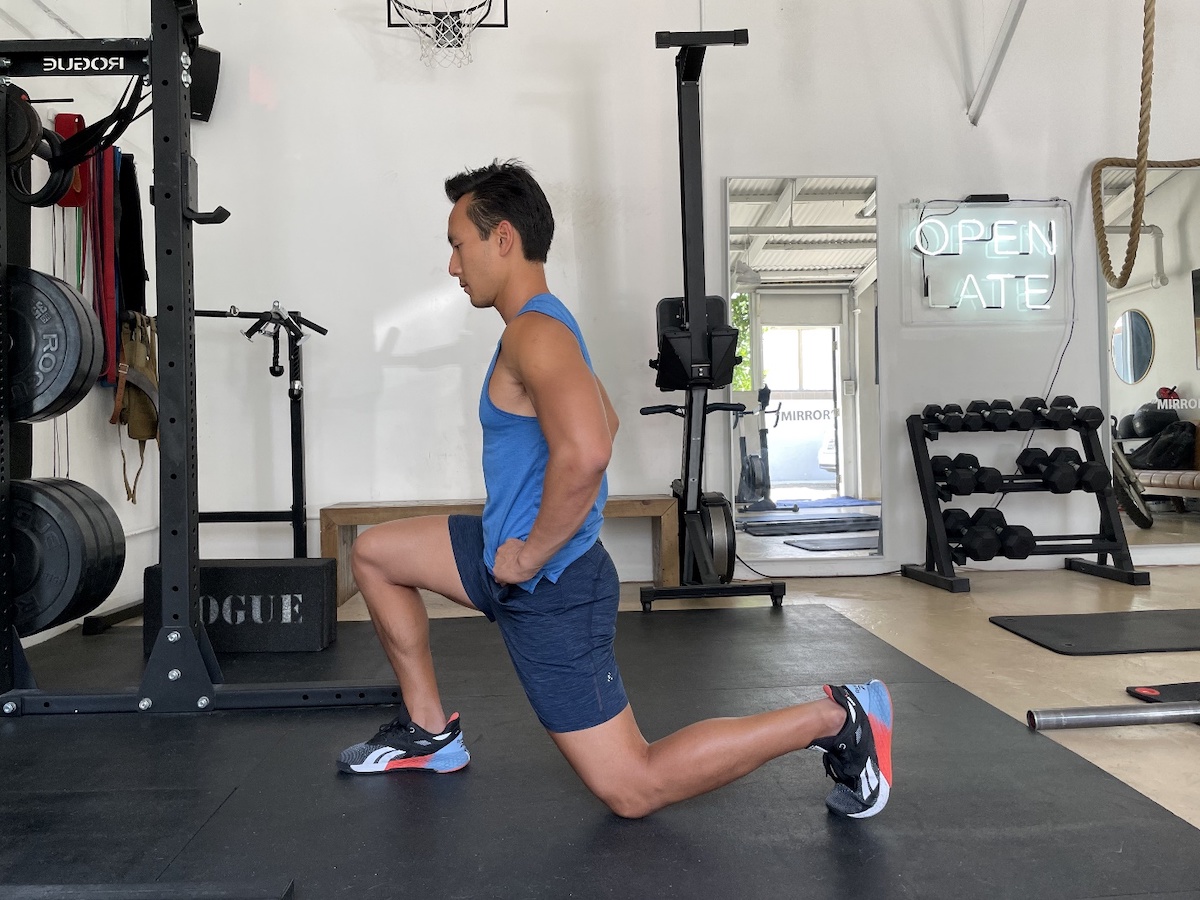

Start by having one foot forward and one foot back in a staggered stance. Keeping your core tight with a slight forward lean, lower yourself all the way down until your back knee touches the ground. Push through the heel of your front foot to come back up, flexing your glute to finish. Complete three to four sets of 10 reps per leg.
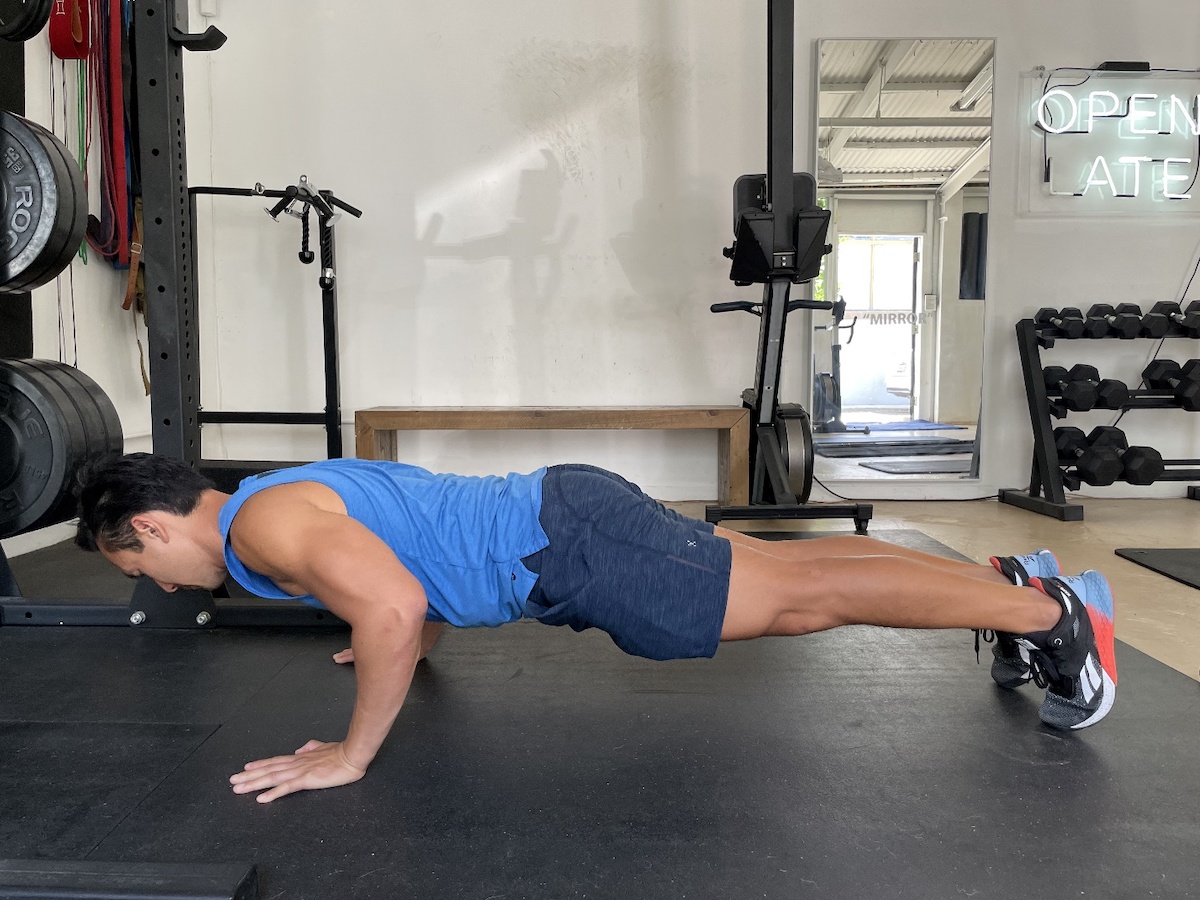

Our list of the best exercises to do if you’re over 60 wraps up with the pushup. Have your body in a completely straight line going down and up. Start the movement with your feet together and your shoulders in line with your wrists. Keeping your core tight and your glutes squeezed, lower yourself (under control) until your chest touches the floor before pushing yourself back up. Complete three to four sets of 10 to 20 reps.









